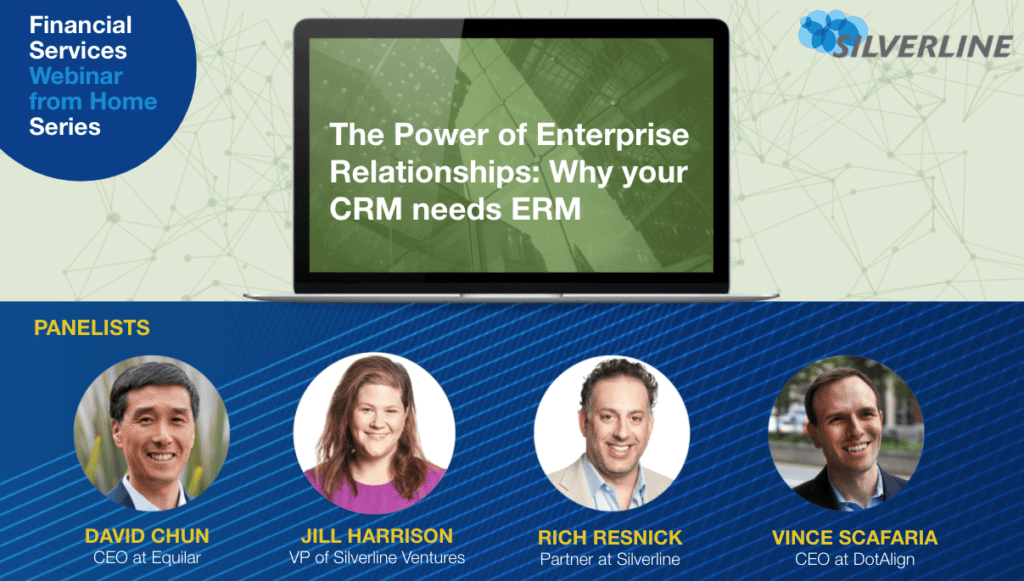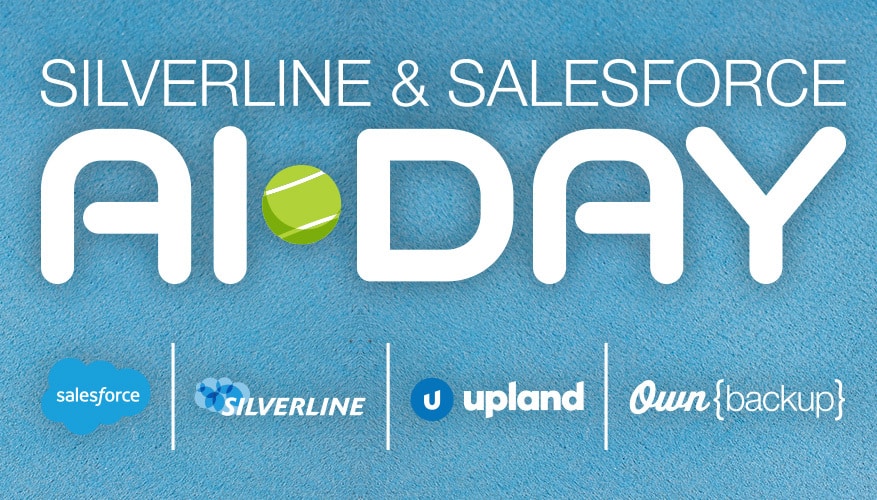On October 8, 2020, I was so excited to sit down with an incredible panel of CEOs and co-founders from Silverline, Equilar, and DotAlign to discuss the evolution of enterprise relationship management over the past decade. While the practice of ERM is not a novel concept, the advances we have collectively seen over the last ten years have catapulted the concept into a major competitive differentiator for firms looking to scale and grow.
While planning for the launch of our strategic partnership with Equilar last month, we realized a great opportunity to help educate the Salesforce community as to how many firms think about relationship management at scale. I’ve spent the last decade of my career working with some of the highest-performing professional cultures in the world: investment banks, private equity firms, institutional asset managers, and hedge funds. I’ve learned so much first-hand about what makes these firms tick, and how culture plays a huge role in how they approach challenges like growing their investment networks and managing relationships that can be worth billions of dollars. But what does ERM mean to these firms?
What is CRM? How is ERM different?
Historically, customer relationship management strategies have focused on understanding the universe of B2B clients and prospects that a firm actively engages with so as to deliver exceptional service at all stages of their respective journeys. From the time a brand makes a first impression with a prospect to the nuts and bolts of how they can get help through a call center or service bot — a fully-actualized CRM program helps to drive efficient operations, uncovers key insights about how clients are engaging, and provides tools to transact effectively and ensure satisfaction, or even delight. As more intelligent AI and machine learning tools become available, we are beginning to edge into predictive service and sales in an increasingly individualized way.
On the other hand, ERM is a strategy in which firms are very intentional with defining their markets, building their networks, and unlocking the power of relationship capital. The belief is that people are at the heart of long-term growth: the more we can understand our network, identify our shared goals, and drive mutual outcomes, the more successful we are together. Tactically, firms with a strong focus on ERM rigorously track the people they know, and map and manage those relationships with intent. They are focused not on individual transactions, but on the long-term goal of building value over time. This is a fundamental shift in thinking, and one that creates generational growth and impact.
Why do firms struggle with implementing an ERM strategy?
As we discussed during the webinar, ERM can present a major data challenge to firms looking to implement for the first time. In years past, firms devoted entire teams of admins, operations, and data stewards to the practice of maintaining relationship data. As firms appoint board members, executives change jobs, and bankers or private equity principals move from firm to firm — it’s hard to keep track of all the changes. This is precisely why Silverline has invested heavily over the years in our Data & Integration Strategy practice; we know clients need help.
Once the data challenge is addressed — or firms decide they’d like to start with a blank slate — apps like Equilar ExecAtlas help them automatically subscribe to the changes happening in their network in real-time. But beyond the data? There is a whole host of operational and cultural questions to answer that contribute to program success. What does relationship coverage mean to a firm? Who has the strongest relationships and how can you measure relationship strength? How are relationship managers held accountable? How can a firm use data-driven analytics to rationalize investment in this type of strategy?
In our jointly-authored whitepaper, we break down an example ERM strategy from the standpoint of a typical Investment Bank. Relationship coverage and ERM programs govern their most important relationships, as well as the talent development programs at these firms. But we also realize that no two cultures are the same: we’d love to talk through common considerations that you could bring to bear with your firm.
What’s at stake?
In the webinar recording, we share ideas about how ERM grows the topline for organizations by better understanding and anticipating need. Certainly this competitive edge promotes growth and builds pipeline.
However, if we are to make meaningful progress on a larger scale towards more equitable, diverse, and inclusive leadership, ERM should be top of mind for business leaders across the board. When ERM functions at scale, firms can leverage their networks for good and promote the kind of fairly represented future that this woman in tech and finance wants to see, hopefully in her lifetime — not 200 years from now.
For more, we invite you to watch the on-demand webinar recording.




